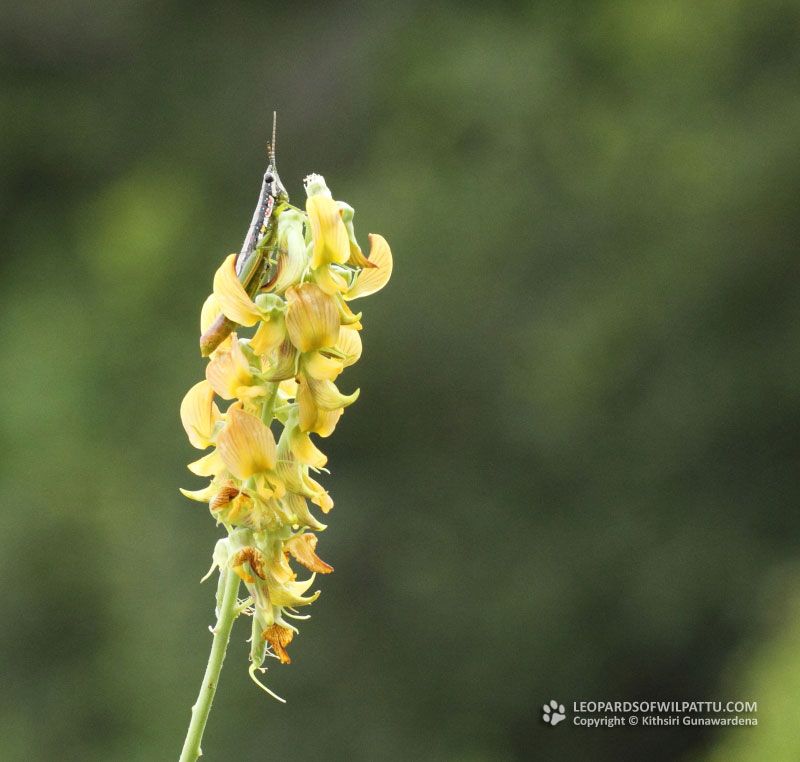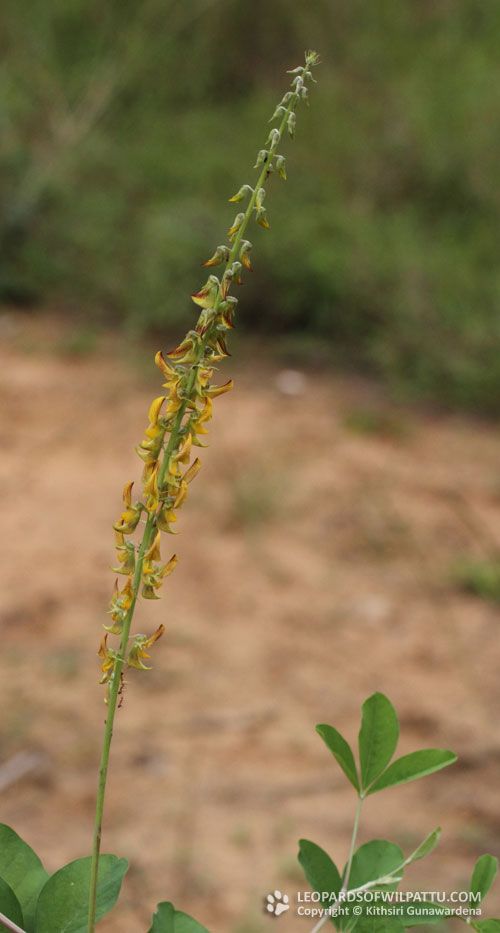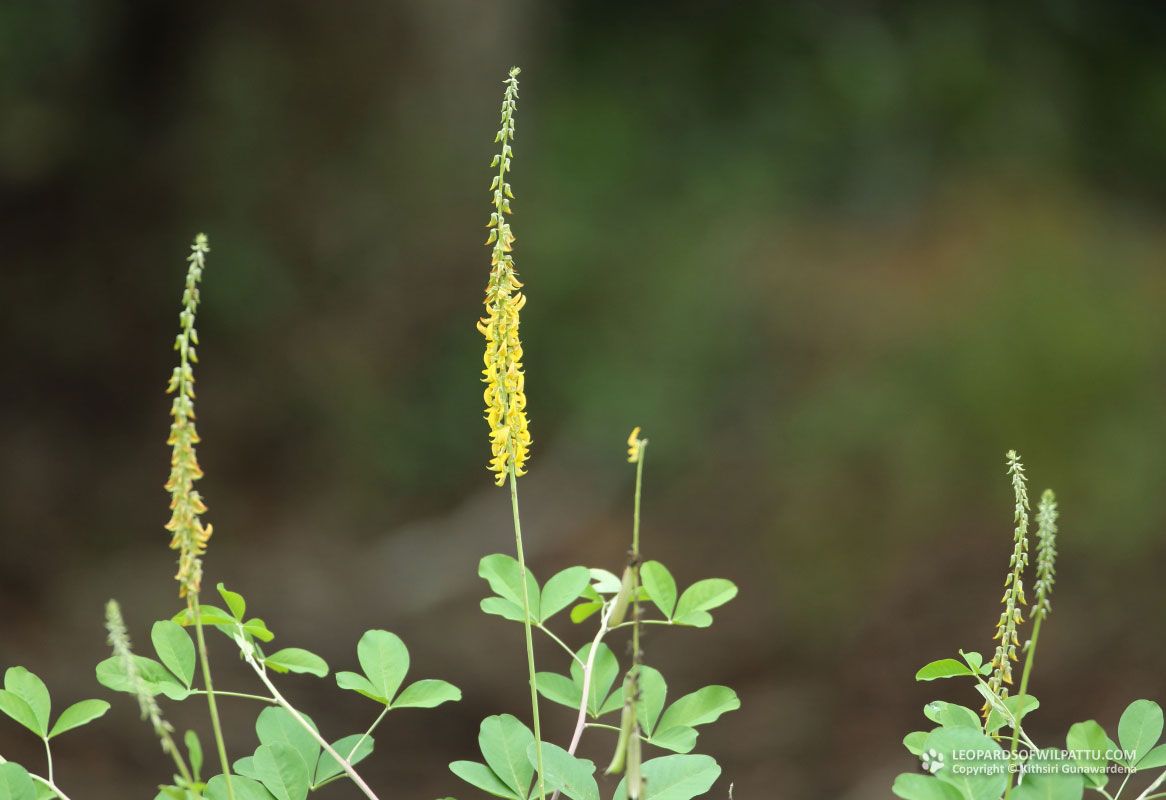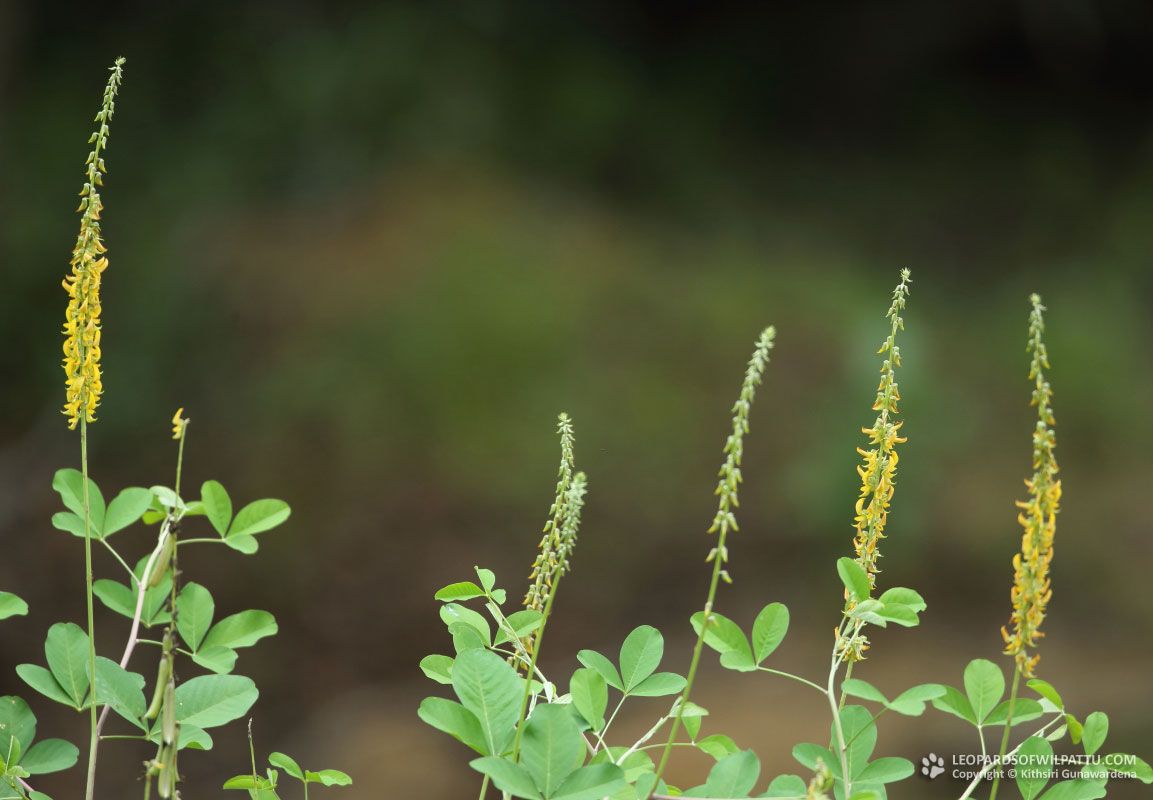
Wild Flowers ‹‹ Go Back
The plants of this genus are commonly known as rattle box or rattle pods which is derived from the fact that the seeds become loose in the pods as they mature and rattle when the pod is shaken. This species is commonly found in the wet and dry lowlands of the country up to a bout 800 meters in altitude. It is native to tropical America and other than in Sri Lanka it is found in Tropical Africa, India, through out Southeast Asia and even in New South Whales. It is usually found along side roads, disturbed forests and wastelands.
The conservation status of this species is regarded as Least Concerned (National Red List 2012).
In the southeastern parts of USA it used to be grown as a nitrogen-fixing legume in the 1960s. The seeds of this species are poisonous. In west Java a fermented drink is made from the seeds. The seeds have to be boiled for two hours, wrapped in banana leaves and left to ferment for several days to remove the poisonous components. In Cambodia the flowers are used as a vegetable. In Indi-china a kind of coffee is made from the roasted seeds. In Vietnam, the roots are some times chewed with betel nut. In traditional medicine, the plant is used to treat urinary problems. A poultice made from the roots is applied to painful swelling of joints, and an extract of the leaves is taken as a vermifige. In Laos it is used to reduce fever.
This species is common in the lowlands of the country and is found commonly even in Colombo.
The Smooth Crotalaria is the host plant for a species of butterfly, which is common in Wilpattu. The Pea Blue lays its eggs on this species and their caterpillars feed on the tender leaves. These plants will always have a few of these butterflies flying around them.
In Wilpattu I have observed the flowers of this species from June to December at many localities such as Walas Wala, Kumutu Villu and Kali Villu. It is quite common along the Puttlam Marichchakaddi road as well. It is known to flower through out the year.




